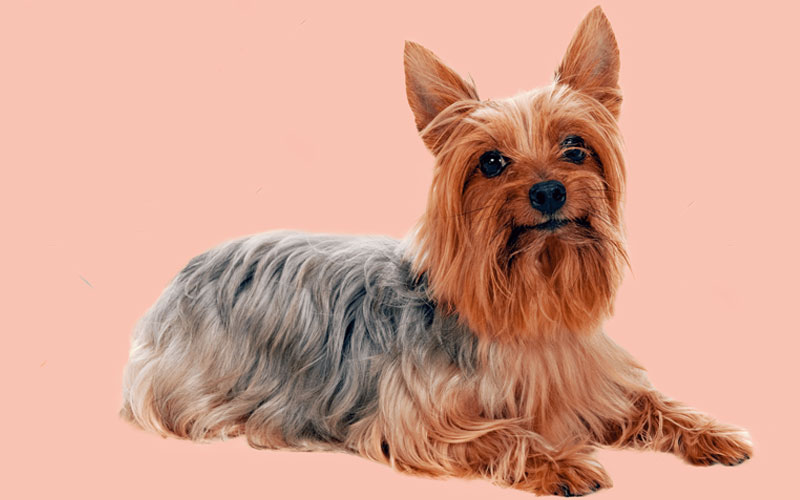
Category |
Details |
Origin |
Australia |
Size |
Small |
Weight |
4 to 5 kg |
Height |
23 to 26 cm |
Lifespan |
12-15 years |
Coat |
Long, silky, and straight |
Colors |
Blue and tan |
Temperament |
Alert, friendly, intelligent, and energetic |
Nutrition |
A balanced diet suitable for small breeds, high-quality dog food, portion control |
Exercise Needs |
Moderate (daily walks, playtime, enjoys mental stimulation) |
Grooming Needs |
High (regular brushing, regular bathing, trimming) |
Training |
Highly trainable, responds well to positive reinforcement |
Good with Children |
Generally good with older children. Supervision is recommended with younger children |
Good with Pets |
Generally good with other pets, especially if socialized early |
Health Concerns |
Patellar luxation, tracheal collapse, Legg-Calvé-Perthes disease, diabetes |
Living Environment |
Adaptable, suitable for apartments, enjoys indoor living |
AKC Group |
Toy |
Original Purpose |
Companion, vermin hunting |
Socialization |
Early socialization is important for developing good behavior |
Barking Level |
Moderate to high, tends to bark to alert |
Independence |
Moderately independent, enjoys human companionship |
Playfulness |
High, enjoy interactive games and toys |
Sensitivity Level |
High, responds well to gentle and consistent handling |
Weather Tolerance |
Prefers moderate climates, and may need protection in extreme cold or heat |
The little and graceful Silky Terrier, also called the “Silky,” is distinguished by its eye-catching looks and exuberant nature. This breed was created when the Australian Terrier and Yorkshire Terrier were crossed.
The typical Silky Terrier weighs 4 to 5 kg, measures 23 to 26 cm long, and lives 12 to 15 years. Because of its unique combination of qualities, the Silky Terrier is a great companion for people and families. Let’s get started with our article without wasting any time.
Origin
A delightful cross between the Australian Terrier and the Yorkshire Terrier, the Silky Terrier is thought to have originated in Australia in the late 19th century. This unusual crossbreeding produced a tiny but robust dog with an opulent silky coat, giving rise to the breed’s unique name and look.
Silky Terriers were initially developed for their ratting prowess, but their lively temperament and loving character rapidly made them popular animals. Dog lovers worldwide now adore them for their grace, intelligence, and steadfast loyalty.
Personality

The Silky Terrier is an exquisite small dog breed with long, silky hair in several color combinations, such as silver and tan or blue and tan.
Its active but refined personality draws fans. Their trainability demonstrates their intellect and passion to please, and their joyful disposition guarantees that they will offer joy and amusement to any family.
Nutrition
The Silky Terrier requires a balanced diet suitable for small breeds. High-quality dog food rich in protein and essential nutrients is crucial for maintaining their health and energy levels. Portion control is important to prevent obesity, which can exacerbate joint issues and other health problems. Fresh water should always be available. Consistent feeding schedules help ensure overall well-being. Consulting a vet for specific dietary needs can help tailor their diet to their individual health requirements.
Health Issues
Silky Terriers are prone to several health issues, including patellar luxation, tracheal collapse, Legg-Calvé-Perthes disease, and diabetes. Regular veterinary check-ups are essential for early detection and management of these conditions. Maintaining a healthy weight through proper diet and regular exercise can help prevent some of these health issues. Monitoring for signs of discomfort or illness and providing appropriate care is crucial for their long-term health.
Pros and Cons of Silky Terrier Dog
Pros | Cons |
Playful and Spirited: Silkies are excellent companions for families and busy persons because, despite their size, they are lively and playful, always up for a game or adventure. | High Energy: Despite their small size, Silky Terriers have a lot of energy and need frequent mental and physical engagement to keep them from becoming bored and engaging in potentially harmful activities. |
Alert Watch Dogs: Silky Terriers are ideal watchdogs because of their solid senses and alert disposition. | Watchdog Tendencies: Although their alertness makes them excellent watchdogs, it may also result in excessive barking if left unchecked or improperly taught from a young age. |
Trainable and Intelligent: These dogs are reasonably simple to teach when given consistent attention and positive reward techniques since they are brilliant and eager to please. | Prey Drive: Silky Terriers, like many other terrier breeds, may possess a high prey drive that causes them to chase birds or small animals, necessitating monitoring when they are outside. |
How To Take Care
Proper care must encompass a number of essential elements to maintain a Silky Terrier’s health, happiness, and general well-being. Their long, silky coat requires frequent care, including weekly brushing to avoid matting and sporadic baths to keep it clean and glossy.
Another crucial element of good nutrition is an age–, size—, and activity-appropriate balanced diet. Frequent veterinarian examinations are required to track their health and quickly handle any possible problems.
Wrapping Up
A wonderful breed, the Silky Terrier makes numerous homes worldwide happy and a companion. Silkies are bound to win over everyone they come into contact with, whether lounging on the sofa or exploring the vast outdoors.







